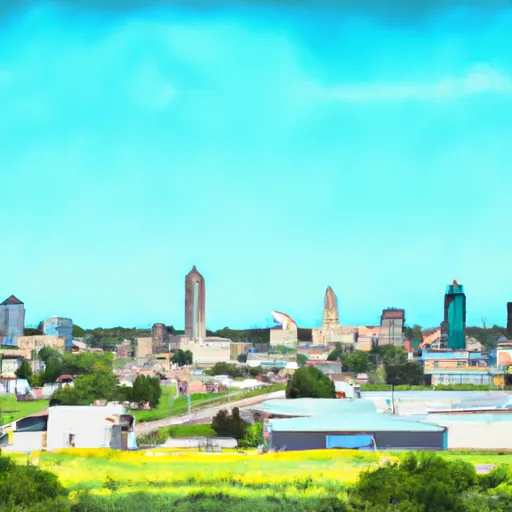°F
°F
mph
Windspeed
%
Humidity











Richland, Iowa is a charming small town situated in the southeastern part of the state. It experiences a humid continental climate with four distinct seasons. Summers are typically warm and humid, with temperatures averaging around 80°F, while winters are cold and snowy with average temperatures around 20°F. Spring and fall provide pleasant weather, making them ideal for outdoor activities.
The town is surrounded by beautiful natural landscapes and is home to several hydrological constituents. It is located near the Des Moines River, which offers opportunities for fishing, boating, and canoeing. Additionally, nearby Lake Keomah State Park provides a serene setting for camping, hiking, swimming, and picnicking. The area boasts lush forests and rolling hills, making it perfect for nature enthusiasts and birdwatchers.
Richland also offers recreational facilities like parks and sports fields, providing opportunities for outdoor sports such as soccer, baseball, and basketball. The town hosts community events like farmers markets and festivals, promoting a vibrant outdoor lifestyle.
In conclusion, Richland, Iowa provides a picturesque setting with a diverse climate, hydrological features, and a range of outdoor recreational activities.
Weather Forecast
Richland receives approximately 929mm of rain per year, with humidity levels near 84% and air temperatures averaging around 11°C. Richland has a plant hardyness factor of 5, meaning plants and agriculture in this region thrive during a short period during spring and early summer. Most plants will die off during the colder winter months.
Regional Streamflow Levels
293
Cubic Feet Per Second
45,000
Cubic Feet Per Second
48,600
Cubic Feet Per Second
197
Cubic Feet Per Second
Nearby Camping
| Camping Area | Reservations | Toilets | Showers |
|---|---|---|---|
| Rollins Ferry Access - MDC | |||
| Jordan - Norfolk Lake | |||
| Georges Cove - Norfolk Lake | |||
| Paydown Access - MDC | |||
| Lakeview Park - Mexico | |||
| Pine Ridge |



